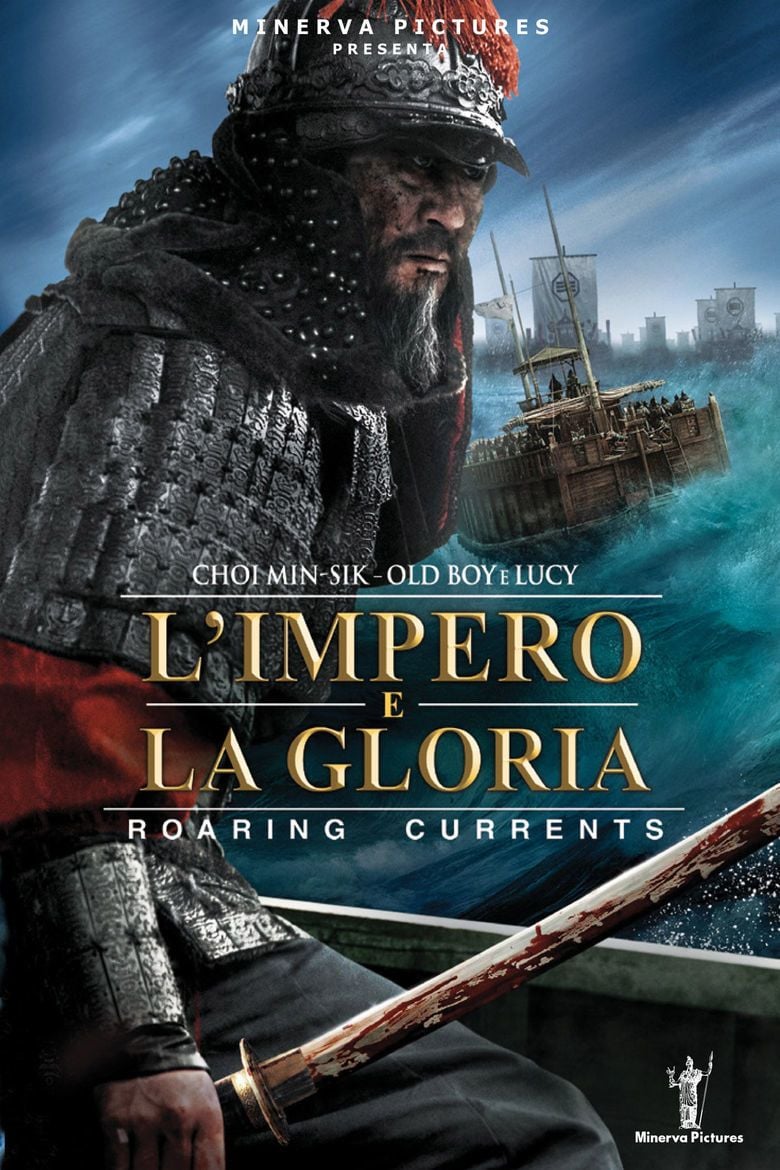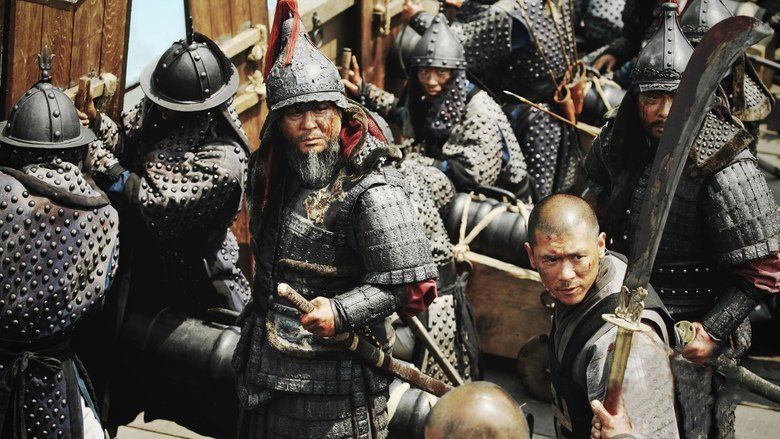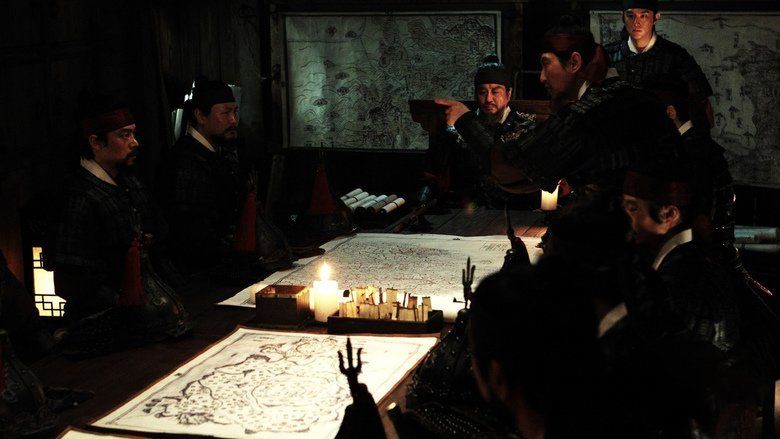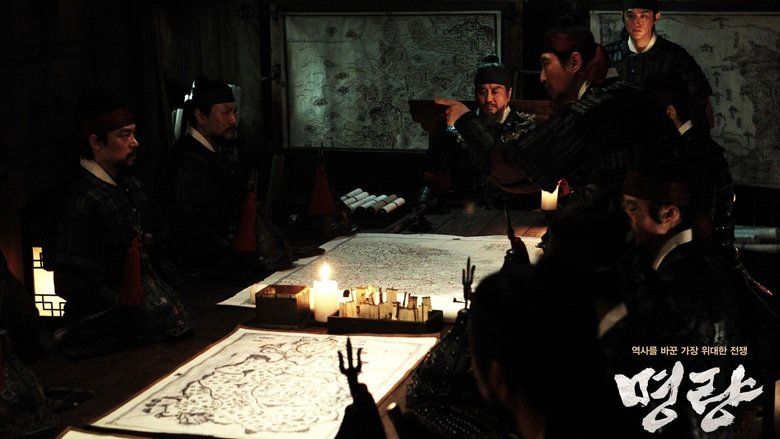The Admiral: Roaring Currents
7.2 /10 1 Votes
Music director Tae-seong Kim | 7/10 IMDb Genre Adventure, Biography, War Duration Language KoreanJapanese | |||||||||||||||||||||||||||||||||
 | ||||||||||||||||||||||||||||||||||
Release date July 30, 2014 (2014-07-30) Writer Cheol-Hong Jeon, Han-min Kim Cast Min-sik Choi (Admiral Yi Sun-Shin), Ryoo Seung-Ryong (General Kurushima), Jo Jin-woong (Wakizaka Yasuharu), (Im Jun-yeong), (Commander Todo), Ku Jin (Lim Jun-young)Similar movies Goodfellas , Dallas Buyers Club , Wild , Steve Jobs , Foxcatcher , J. Edgar Tagline 12 ships against a fleet of 330 | ||||||||||||||||||||||||||||||||||
The admiral roaring currents official trailer 2 2014 korean historical war movie hd
The Admiral: Roaring Currents (Hangul: 명량; Hanja: 鳴梁; RR: Myeongryang), or simply The Admiral, is a 2014 South Korean naval war film directed and co-written by Kim Han-min. Based on the historical Battle of Myeongnyang, it stars an ensemble cast led by Choi Min-sik as the Korean naval commander Yi Sun-sin. The film was released theatrically in South Korea on July 30, 2014.
Contents
- The admiral roaring currents official trailer 2 2014 korean historical war movie hd
- The admiral roaring currents official us release trailer 2014 choi min sik war drama hd
- Plot
- Historical background
- Credits
- South Korea
- International
- Positive
- Negative
- References

As the film recorded 10 million admissions only 12 days after its premiere, it set a record for achieving such amount of viewers in the shortest amount of time. The movie also surpassed Avatar’s record of 13 million viewers to become the most-watched and highest-grossing film of all time in South Korea, with 17.6 million admissions and a worldwide gross of US$135.9 million.

The admiral roaring currents official us release trailer 2014 choi min sik war drama hd
Plot

The film revolves around the titular Battle of Myeongnyang circa 1597, regarded as one of legendary Joseon admiral Yi Sun-sin's most remarkable naval victories, in which he led the only 12 ships remaining in his command to a heroic victory against an invading Japanese fleet numbering 330 vessels.

At the onset of the battle, at their base in Haenam, the Japanese invaders under Tōdō Takatora are confident that their planned expedition to Hansong to capture King Seonjo will meet with success, even though they remain reserved over the news that Joseon's greatest admiral, Yi Sun-sin, has been restored to his former command following the disaster at Chilcheollyang, which has reduced the Korean navy to a mere dozen battle-ready ships. In order to ensure success of the operation, Hideyoshi sends one of his finest naval war leaders to Joseon: Kurushima Michifusa, the commander of the Murakami Clan Navy, and an expert in naval combat who, however, enjoys a shaky reputation among his fellow daimyo as a pirate. One of the Admirals of the Japanese Left Army, Wakizaka, first meets Kurushima and his lieutenant Kimura while finishing off the remnants of a group of Joseon soldiers. He is especially distrusting of Kurushima, and draws his sword on him several times, especially after the latter insults him by shaming his defeat at Hansan Island. Later, Kurushima and Haru, his sharpshooter, drink sake as Kurushima elaborates on his personal vendetta against Yi Sun-sin, stating that his brother Michiyuki was killed by the latter earlier in the war.

In the meantime, Yi Sun-sin is facing the despair mounting among his officers and troops. Facing an enemy force far outnumbering them, and seeing no reasonable chance of success in the inevitable clash even with one single turtle ship remaining, many consider the fight lost before it has even started. Despite his outwardly indifferent demeanor, Yi is hard-pressed to maintain morale among his men and desperate to find a solution for his problem. But then the breaking point seems reached when General Bae Seol, the deserter of Chilcheollyang, burns the turtle ship and has his men make an attempt at Yi's life. Although Yi escapes and Bae is killed for his act of treachery, the ship is lost, boosting confidence among the Japanese and further dispiriting his own troops. In order to seek an answer, Yi travels to the Myeongnyang Strait, an area notorious for its strong and treacherous currents which the Japanese intend to cross on their way to Hansong. Later, he confides in his son Hoe that, in order to win the fight, he has to turn the fear paralyzing his men into courage. Upon hearing that the departure of the Japanese attack fleet is imminent, Yi abandons his base and moves to Usuyeong after burning the naval facilities to the ground.

The next morning, Yi's fleet arrives in the strait and is shortly met by the Japanese, who are using the morning tide to move into the channel, with Kurushima leading the avantgarde force. Yi engages Kurushima's fleet in battle, but as the other Korean commanders are still hesitant to involve themselves, Yi's flagship is quickly surrounded and attacked by boarding parties. In this apparently hopeless situation, Yi commands several cannons to be fired from the rower deck's port hatches in a concentrated volley, using their recoil to blast the ship free of its encirclement. As Yi has hoped, this bold act of survival inspires the rest of his countrymen to take the fight to the enemy.
When the tide turns and forms a whirlpool in the middle of the channel, thus beginning to solidify Yi's defensive position, Kurushima orders an all-out attack with the rest of his ships. Despite the efforts of Haru and a ship loaded with black powder charges, the renewed courage of the Koreans prevails (though heavy sacrifices are made). Kurushima's now desperate situation is observed by Todo, who merely laughs at Katō's suggestion of reinforcing him. Kurushima, realizing that he is now on his own, boards the Korean flagship, but is decapitated by Yi himself after taking several arrows from Korean archers, and his head is hung from the tip of the ship's mast. When Yi's ship itself is caught in the whirlpool, his civilian navy servants and local fishermen courageously drag the vessel back to safety. Joined by the rest of the fleet, Yi leads a counterattack which deals the Japanese forces a crushing blow, forcing them into retreat and leaving the Koreans triumphant. The film ends with the onset of a later naval engagement, in which the horrified Japanese witness the turtle ship's return to the battlefield.
Historical background
In the 16th century, a general called Toyotomi Hideyoshi unified Japan and the long civil war in Japan was ended. At that time, most Koreans didn't think about any possibility of invasion from Japan and ignored the war-readiness of Japan. Therefore, the army and Korean Navy except for the admiral Yi Sun Sin were not prepared for any invasion from Japan. Only admiral Yi Sun Sin prepared for a war against Japan by building up ships and developing weapons. In 1592, the Imjin War broke out when Japan invaded Korea. From the beginning of the war, the Japanese army, which were well experienced as a result of their civil war, were easily defeating the Korean army and quickly advancing to the north. However, at sea, the admiral Yi Sun Sin's Joseon Navy destroyed the Japanese naval fleets in many consecutive battles, so that the Japanese navy's advance to the west and north was frustrated and Japanese supply lines on sea routes were not open at all.
However, in 1597, due to a Japanese espionage plot and political conspiracy in the Korean royal court, Admiral Yi Sun Sin was imprisoned by the Korean government and another admiral (Won Gyun) was appointed to command the Korean navy. Admiral Won, in his first and last naval engagement, attacked the Japanese navy but was seriously defeated by Japan and lost most of the warships (more than 200 warships). Won was killed in action. After this defeat, the Korean government released admiral Yi and put him back in the position of admiral, but the fleet consisted of only 13 warships due to the prior defeat. The Korean government suggested that admiral Yi forgo sea warfare and join any land-based battle. But, Admiral Yi believed he should instead prevent the Japanese navy from advancing via the sea. In October 1597, a Japanese fleet of 330 ships tried to attack the small Korean fleet of 13 ships.
As the Japanese moved toward the Korean fleet, Admiral Yi enticed the Japanese fleet to a long and narrow strait with a fast and strong wave flow. He also hampered the Japanese fleet’s navigating by blocking the strait with steel chains. (doubtful: see Battle of Myeongnyang: Chain or iron rope across the strait) Therefore, many Japanese ships were gathered and stuck in the narrow strait, as the tide shifted. The cannons on Korean warships outside the strait bombarded the Japanese ships. The Japanese fleet, having lost more than 31 warships, retreated to the east and they finally gave up advancing toward the west by sea.
Credits
South Korea
The Admiral: Roaring Currents drew 682,882 viewers on its first day in theaters on July 30, 2014, grossing US$4.77 million. This was the all-time highest opening day box office in South Korea, for both a foreign and domestic film, breaking the previous record set by Kundo: Age of the Rampant. It went on to set other new records: highest opening weekend, with 3.35 million admissions (US$25.94 million), surpassing Transformers: Dark of the Moon's record of 2.37 million (set in 2011) by 41%; biggest single day for a film in South Korean history with 1.25 million admissions (US$9.71 million); the first time that a film generated over ₩10 billion in a single day; and the quickest film to reach 10 million admissions.
By August 15, The Admiral: Roaring Currents became the all-time most-watched film in South Korea, breaking the previous record held by Hollywood blockbuster Avatar (13.62 million). By August 17, it became the first film to sell more than 14 million tickets in South Korean theaters and the first domestic film to exceed the US$100 million mark. At 17,607,820 admissions, it has grossed US$132 million in South Korea.
International
It opened in limited release across 30 theaters in North America, beginning August 15, 2014. Due to favorable reviews from critics and moviegoers, it expanded to 42 theaters on its second week, and its first week gross of US$1.18 million surpassed the previous record held by Masquerade (US$923,442) as the highest-grossing film directly distributed by a South Korean distributor. The film has grossed CN¥26.53 million in China, US$2,589,811 in the United States, and US$135.9 million internationally.
Positive
Negative
References
The Admiral: Roaring Currents WikipediaThe Admiral: Roaring Currents IMDb The Admiral: Roaring Currents themoviedb.org
